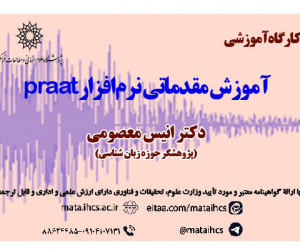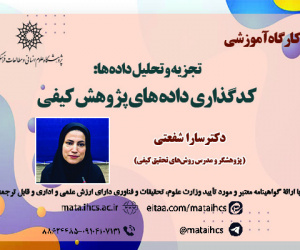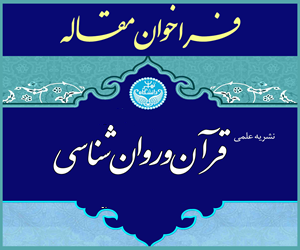نگاشت عناصر داده ای منابع جغرافیایی در مارک ایران با موجودیت ها، ویژگی ها و روابط در مدل مرجع کتابخانه ای ایفلا (ال .آر.ام.) (مقاله علمی وزارت علوم)
درجه علمی: نشریه علمی (وزارت علوم)
آرشیو
چکیده
هدف: سازمان دهی منابع جغرافیایی به عنوان یکی از انواع منابع غیرکتابی مورداستفاده کاربران کتابخانه ها، از آن روی که اطلاعات دقیق و راهبردی در مورد هر نقطه از جهان ارائه می دهند، بسیار مهم تلقی می شود. در بسیاری از کتابخانه های کشور سازمان دهی منابع جغرافیایی به شیوه کتاب و با قالب مارک ایران انجام می شود، درنتیجه به دلیل عدم برقراری ارتباط میان رکوردهای کتابشناختی، کاربران در جستجو و بازیابی منابع جغرافیایی با چالش مواجه می شوند. ازآنجایی که برقراری ارتباط معنایی میان رکوردهای کتابشناختی در کتابخانه های کشور مستلزم پیاده سازی نظام های فهرست نویسی کتابخانه ای مبتنی بر مدل های مفهومی است که جدیدترین آن ها، مدل مرجع کتابخانه ای ایفلا (ال.آر.ام.) است، نگاشت رکوردهای کتابشناختی مارک ایران با مدل ال .آر.ام. امری ضروری است. بدین منظور، این پژوهش با هدف تطبیق عناصر داده ای منابع جغرافیایی در قالب مارک ایران با موجودیت ها، ویژگی ها و روابط در مدل مرجع کتابخانه ای ایفلا ال.آر.ام. انجام شده است.روش: پژوهش حاضر به لحاظ هدف از نوع کاربردی بود که به روش تحلیل محتوای کیفی و با استفاده از ابزار سیاهه وارسی مربوط به گزارش نهایی ایفلا ویرایش اوت سال 2017 انجام شده است. در این سیاهه وارسی، ساختار مربوط به 11 موجودیت (در سه سطح) ، 37 ویژگی و 36 رابطه بین آن ها به طور جامع و واضح در قالب جداول جداگانه ارائه شده است.یافته ها: در مطالعه حاضر تمامی عناصر داده ای منابع جغرافیایی در قالب مارک ایران با موجودیت ها، ویژگی ها و روابط میان آن ها در مدل ال.آر.ام. در یک جدول نگاشت شده است. بدین صورت که ستون های این جدول متشکل از فیلدهای اصلی و فرعی بلوک های مارک ایران مربوط به رکوردهای منابع جغرافیایی برگرفته از نرم افزار رسا و نیز ستون های موجودیت ها، ویژگی ها و روابط منابع جغرافیایی در مدل مرجع کتابخانه ای ایفلا ال.آر.ام. است. با توجه به ساز و کار گسترش پذیری مدل ال.آر.ام.، پنج رابطه جدید (شخص بخشی دارد شخص، اثر خلق شده توسط شخص، شخص معادل است با شخص، اثر خلق شده توسط عامل جمعی و عامل جمعی معادل است با عامل جمعی) توسط پژوهشگران در مدل ال.آر.ام. پیشنهاد و افزوده شده است.نتیجه گیری: چنانچه همه موجودیت ها، ویژگی ها و روابط میان آن ها نظام مند توصیف شود، نگاشت فیلدهای مربوط به منابع جغرافیایی در رکوردهای مارک ایران به مدل ال.آر.ام. موفقیت آمیز خواهد بود. نتایج حاکی از آن است که تمامی عناصر داده ای منابع جغرافیایی در قالب مارک ایران با موجودیت ها، ویژگی ها و روابط میان آن ها در مدل ال.آر.ام. قابلیت انطباق دارند. همچنین نتایج این مطالعه نشانگر بازنمون روابط جدیدی میان موجودیت های مدل ال.آر.ام. است. ازآنجایی که مدل ال.آر.ام. یک مدل مرجع است و قواعد آر.دی.ای. نیز از این مدل به عنوان راهنما بهره می برد، انتقال از قالب یونی مارک به مدل مفهومی ال.آر.ام. می تواند راه حل مناسبی برای سازمان دهی منابع جغرافیایی با استفاده از استانداردهای نوین باشد.Mapping the Data Elements of Geographical Resources in Iran MARC with Entities, Attributes, and Relationships in the IFLA Library Reference Model (LRM)
Purpose: The organization of geographical resources is considered important as one of the types of non-book resources used by library users because they provide detailed and strategic information about any place in the world. In many libraries the organization of geographical resources is done in the book standards and with the Iran MARC format, as a result, due to the lack of relationship between bibliographic records, users face challenges in searching and retrieving geographical resources. Since establishing a semantic relationship between bibliographic records in the libraries requires the implementation of library cataloging systems based on conceptual models, the newest of which is the IFLA Library Reference Model (LRM), it is essential to map bibliographic records of Iran Marc with the LRM model. For this purpose, this research was carried out to map the data elements of geographical resources in the Iran MARC format with the entities, attributes, and relationships in the IFLA Library Reference Model (LRM).Method: The current research was conducted using the qualitative content analysis method and the checklist tool related to the IFLA final report, the August 2017 edition. In this checklist, the structure of 11 entities in three levels, 37 attributes, and 36 relationships between them are comprehensively and clearly presented in the form of separate tables.Findings: In this study, all the data elements of geographical resources are mapped in the table including data elements of Iran MARC format with entities, attributes, and relationships between them in the LRM model. In this way, the columns of this table consist of the main fields and sub-fields of Iran MARC format related to geographical resource records taken from RASA software, as well as the columns of entities, attributes, and relationships of geographic resources in the LRM model. Also, Due to the extensibility mechanism of the LRM model, five new relationships (person has part person, work was created by a person, a person is equivalent to a person, and the collective agent is equivalent to a collective agent) have been added to the LRM model by the researchers.Conclusion: If all the entities, attributes, and relationships are systematically described, the mapping of the fields related to Iran MARC records to the LRM model will be successful. The results indicate the data elements of geographical resources in the UNIMARC format are compatible with the entities, attributes, and relationships in the IFLA LRM model. Also, the results of this study indicate the representation of new relationships between the entities of the LRM model. Since the LRM model is a reference model and the RDA rules use this model as a guide, transferring from the UNIMARC format to the LRM conceptual model can be a suitable solution for organizing geographical Resources.






